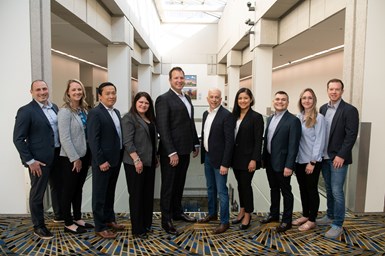GE Additive, Orchid Collaborate on 3D Printing Orthopedic Joint Implants
The agreement bolsters the use of additive manufacturing in the medical implants sector with the development of electron beam melting solutions.
Share
Read Next
GE Additive and Orchid Orthopedic Solutions (Orchid) — a manufacturer of orthopedic implants and instruments — are collaborating to drive the adoption of additive manufacturing (AM) with Orchid’s suite of technologies through the development of electron beam melting (EBM) solutions in the medical implants sector.
Orchid says it is making a significant investment to enable scalability and full production support for its customers by purchasing GE Additive EBM Spectra L systems, service agreements, AP&C metal powders and AddWorks consultancy services. Installation of the first machines begins in 2022. Following machine installation and validation, Orchid expects to be ready for production in 2024 to meet its customers’ requirements.
GE Additive and Orchid are focused on joint co-marketing activities aimed at driving further awareness of EBM technology in 3D metal printed large joint orthopedic implants.
“We are thrilled to collaborate with GE Additive to bring additive manufacturing capabilities to our customers,” says Nate Folkert, Orchid CEO. “Together, with our extensive knowledge of large joint orthopedic manufacturing, we will be able to serve customers like never before.”
Once installed and operational, Orchid’s fleet of Spectra L machines will enable the company to manufacture large orthopedic implants, such as complete knee components and acetabular cups. As devices increase in complexity, this new EBM AM capability with scalable precision provides cost-effective manufacturing to complement conventional methods.
The Arcam EBM Spectra L enables the mass production of parts by providing the ability to tightly stack parts without compromising on quality. The improved melt process results in consistent material properties for thin and bulky geometries, the companies say.
Some key features are said to include improved part quality through adjusted surface finish and material properties, and reduced cost per part due to increased build speed, a large EBM build volume and the ability to tightly stack parts. In addition, the integrated system architecture with standardized IoT interface, data analytics for machine health monitoring and the new Powder Recovery Station (PRS 30), is also a benefit to users.
“I am honored that Orchid has put their confidence and trust in GE’s additive expertise, at such an important juncture in its metal AM journey,” says Riccardo Procacci, GE Additive president and CEO. “I look forward to our teams building a long-term relationship over the coming years.”
- Learn how GE Additive is helping an EBM orthopedic implant manufacturer startup plan for scalable production.
Related Content
-
Sciaky Manufactures Critical EBAM Component for Intuitive Machines’ Moon Landing
The Sciaky engine component was the upper section of the IM-1 lander’s main engine nozzle, which provided the main source of thrust for descent in the February 2024 mission to the Moon.
-
Wayland Additive’s NeuBeam Technology Offers Hot, Stable Process for Producing Fully Dense Parts
Formnext 2024: The Caliber3’s NeuBeam PBF process gives users flexibility to choose the temperature and melt strategy that best suits the part, material selection and application, rather than being confined by the process itself.
-
Powder2Powder Atomization System Upcycles Powder Waste and Enables Custom Powder Production for Additive Manufacturing
Formnext 2024: The patented technology offers a complete solution for both recycling and custom alloy powder production.














